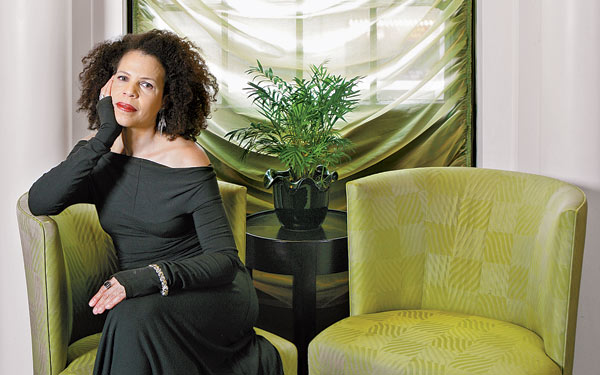
Ifa Bayeza reached a critical point three years ago. She found herself on the edge of the Tallahatchie River—the spot where Mississippi authorities in 1955 recovered the mutilated remains of 14-year-old Emmett Till, the Chicago youth who had been kidnapped, beaten, tortured, shot, and finally dumped in the river, bound with barbed wire to a 75-pound gin fan.
Bayeza had to be there, at that spot, at that time. Not just because 2005 was the year America commemorated the 50th anniversary of the lynching that galvanized the young civil rights movement. But because, for her, it was also a story that had grabbed her and never let go.
“It was a very contemplative, quiet time,” she recalls of the Yoruba-inspired ritual she performed that day at the river’s edge, planting mums (“Because Emmett was colorful”), leaving an offering of bubblegum and Baby Ruth candy (“He loved sweets”), pouring a libation, observing a prayerful moment. In that spiritual space, Bayeza did more than pay homage to “this ancestor who had given so much and meant so much” and deserved so much to be remembered. She received affirmation that she was on the right path in pursuing a story—one she had not set out to write.
“I see this as an American story as much as an African American story,” says Bayeza, a Harvard-educated writer, who first worked in theatre as the dramaturge on the groundbreaking Obie Award-winning 1975 play For colored girls who have considered suicide, when the rainbow is enuf, written by her older sister, Ntozake Shange.
Like Shange’s breakout choreopoem, Bazeya’s new play, The Ballad of Emmett Till, which previews at the Goodman Theatre on April 26th, has a contemporary structure. The drama is built around four movements, focusing on a poignant mother-and-son relationship, Emmett’s tragic experience in Mississippi, the murder trial, and the aftermath. As the title suggests, music is key to the presentation, but it’s not a musical, Bayeza is quick to point out. “I have Emmett doing things that are natural, that come out of the way black people express themselves. In the course of living our lives, we sing.”
Such was her life as a child in St. Louis, where Bayeza’s household was a blend of art and social activism. Family guests included jazz artists Dizzy Gillespie and Chico Hamilton and activist-scholar W. E. B. Du Bois. And she was best friends with the daughter of her next-door neighbor—rock ‘n’ roller Chuck Berry. “It was quite a magical time,” she recalls. “It was a very rich and fluid intellectual household.”
Her father, a physician, and her mother, a social worker, exposed their four children to the theatre early on. Our Town and Ballet Folklórico particularly resonated with young Ifa. And then there was The Crucible, which she saw at age 13. “I didn’t know about McCarthy and all that,” she recalls. “But I knew it was about oppression,” and because of that “I saw the black experience within this story about a historic American moment. I saw the capacity of theatre to show social complexity and to challenge audiences to look at some of our difficult crossroads.”
Her obsession with Emmett Till began ten years ago when she tried to create a character who had witnessed Emmett’s murder and failed to come forward. In searching for more detail to flesh out that story, Bayeza embarked on archival research. What she found were contradictions: Many of the news stories relied on a flawed early account. That discovery—and a sense that Emmett was trying to reveal himself to her—propelled her to conduct her own interviews. She talked to Emmett’s family and childhood friends and discussed the event with scholars in an effort to get at the facts of a case in which justice was never rendered: An all-white jury acquitted the two accused men, who later confessed in a boastful article in Look magazine.
“She works as a painter would, but with layers of historical research and interviews that are new,” notes Robert Falls, the Goodman’s artistic director, who expects the play to stimulate a provocative conversation about race. “For an audience to experience the work, to talk about it, to reflect on the event is the essence of theatre.”
In a way, that conversation is the coda to this story. The unfinished part of it all. And at least part of the reason why Emmett’s tragic story still resonates—part of the reason why Bayeza reaffirmed her commitment to it three years ago. “Just as justice for Emmett Till is long overdue,” Bayeza says, “these conversations are long overdue.”
Photograph: Katrina Wittkamp


